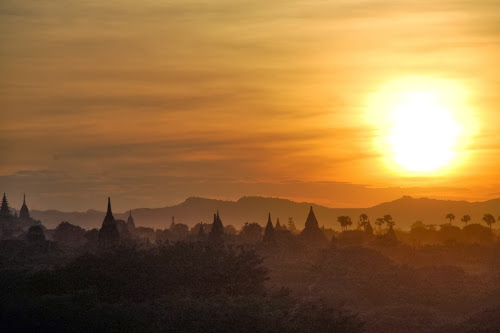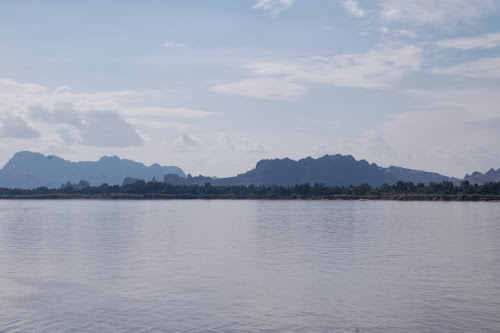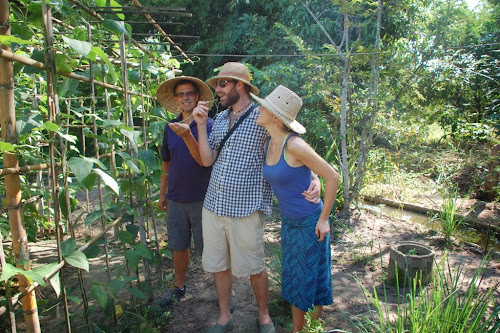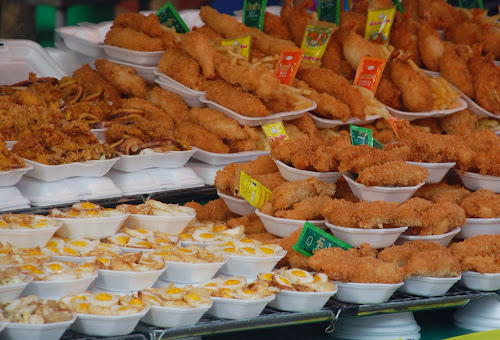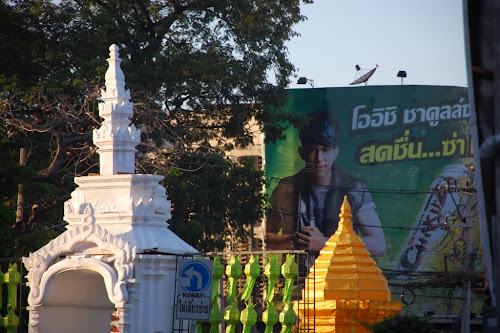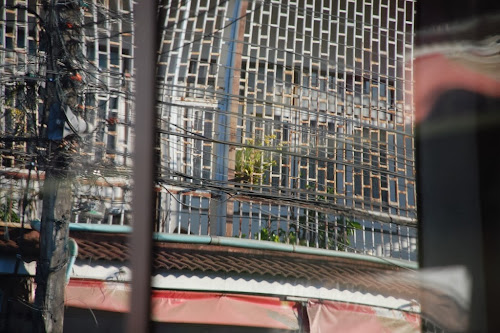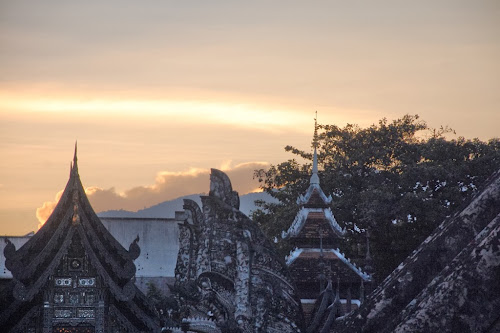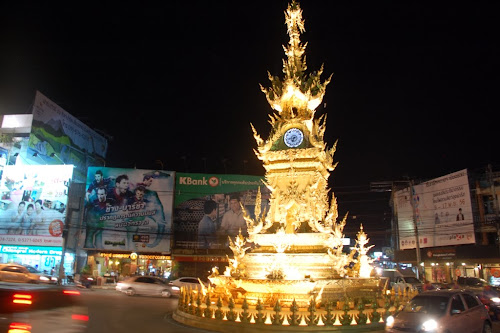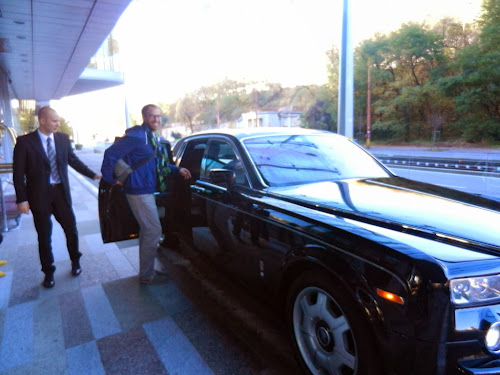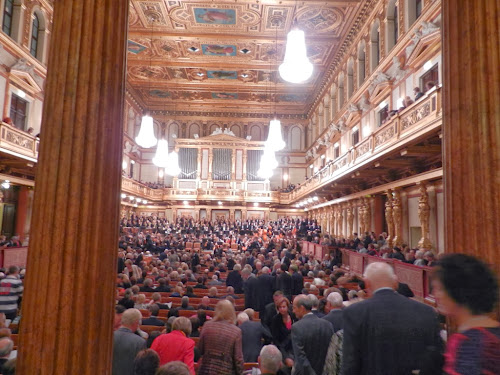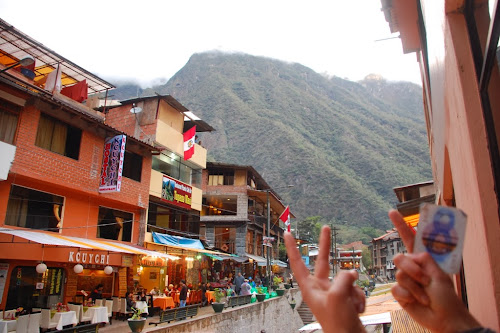Today started a little rough. Muriel and I caught a night bus from Bagan back down to the capital, Yangon. The bus was comfortable enough, and like most night buses it stopped a couple of times for pit stops and for people to shovel in some food. Thankfully, it was not too cold with AC blasting and mostly quiet. By now, I have a system for the night buses that involves a beloved playlist on my phone, an eye mask to block out the disorienting lights, and a hoodie to stay warm and comfy. Not a great night of sleep, but plenty good enough.
We arrived at about 5 am to my least favorite place in all of Myanmar, the Yangon bus station. I viscerally hate touts and this bus station is lousy with them. 'Where you go?' 'Taxi?' 'Where you go?' 'Taxi?' It is so hard to know if people actually want to help you or see you as a big wallet. Easily one of my least favorite parts of travel.
Thankfully, we planned this out so that our next bus leaves in a little over an hour. No need for any help, this time. We wander/stumble around the awakening and sprawling bus station, until we find Winn Bus company that will take us close to our destination, the town of Kinpun. We had picked out this smallish town because of its proximity to a very important pilgrimage site, the Golden Rock pagoda that sits at the top of a roughly 1,100 meter mountain and draws pilgrims from across the country.
Back at the bus station, we have an hour or so to kill and pick out one of the many tea houses that are so common here. Muriel gets a Myanmar tea, which is tea with condensed milk to sweeten it up and I go with boring Chinese tea. We take a deep breadth, and then I notice some movement behind Muriel. Ugggh, a very big mouse is a couple of feet from my wife. We won't be lingering here very long. A minute later, I see a pretty big roach skittering about and it is time to move on.
The sun has slowly risen and the day is starting in earnest. Even though I could feel more rested, there is something so calming about the beginning of a day. It is not that common for me to see the light of dawn back in our old professional life, as I am more of a night person. But still, it always seems to strike something deep in my biorhythms and feels good.
We get on the bus and doze a bit, in several hours we are off the DC-9 equivalent bus and on to the open bed of larger pickup truck for the 45 minutes to Kinpun. We pull into the guest house about noon, both feeling pretty energetic and good. Our original plan was to relax today, read and do some stuff online, but we made pretty good time and there is plenty of daylight to tackle the 1,000 meters and 7.5 miles of the pilgrim route up the mountain to the golden rock.
We start out and the trail is pretty easy to follow. There are hundreds of stands selling water, food and snacks. Still, it is very pleasant and more shade-covered than I had anticipated. Still, the humidity is pretty intense and it is not too long before both Mu and I are drenched in sweat -- so much sweat that you could wring it from our clothes. Only 6 more miles to go!
Nearly everyone along the way happily extolls us with 'Ming guh la ba!' - hello in Burmese. Mu responds in kind, while my attempts to reciprocate all feel bloated and wrong. We play with some of the kids on the trail, which is fun. After a couple of hours, we make it on a ridge and have vistas of the receding ridges that cascade to the east towards Thailand. On the other side, the flat expanse of Burma extends all the way to the horizon.
Eventually we make it to the pagoda way up at the top of the mountain. After the relative peacefulness of the afternoon on the trail, it is a shock to the system to have the thousands of people up here. Some rich tourist are being transported around by 4 porters while reclining colonial style, which makes me sick to the stomach.
We head to the golden rock, which is perched precariously on the mountain top and is coated in actual gold. There are many pilgrims around, which is cool to see. Especially the groups of youthful monks in training, some with smartphones which has become a bit disarming to me and quite common. Still, we get a bad taste in our mouth once the prime spots of the pagoda are reserved exclusively for men, as mu wrote about so well here.
It is starting to get dark and we pile in with about 50 other people in the back of a beat up truck that will wind its way down the mountain. It is proper night by the time we get down all the way down, with several breaks to wait for trucks coming the other way up the road.
Then, we have a wonderful dinner in a restaurant a few stalls down from the hotel. Burmese curry and soup and rice and some fried greens. All delicious and costing about $2 bucks. Followed by a scoop of ice cream on the street. A great finale to our full day. Then it is back to the hotel, I read and mu does some stuff on our ipad.
This was one of the times where the journey was far superior to the final destination, an experience that has occurred many times this last year+. We go to bed having enjoyed this day and ready for the next one.






